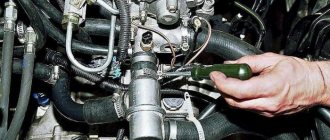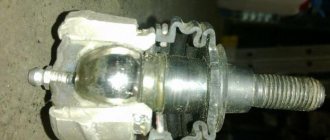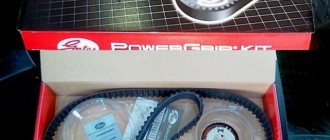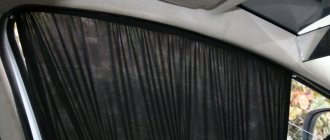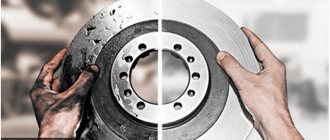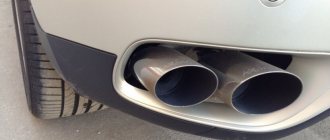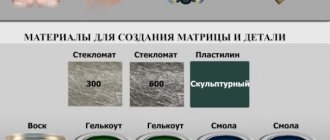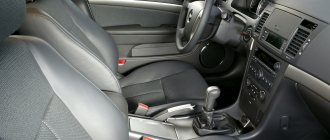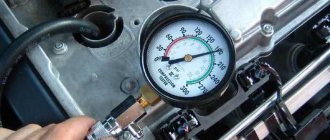Tire selection
There are tires that should not be studded.
There is no point in working with summer, all-season and tread tires. But if the summer ones have a tread, then they will fit. You should not try to stud the tires yourself at home if they are clearly worn out and cracks are visible on the surface. On a note!
A tire manufactured more than 5 years ago will also be unsuitable for studding.
For tucking, it is better to choose Scandinavian ones, as they are intended for modification. They have recesses for new studs, although they are not very cheap. If there are none, you can purchase rubber made from a hard compound and having a deep tread.
Studring winter tires with your own hands without a pneumatic gun
It is quite obvious that not every driver can afford a stud gun. You also need to have a compressor, which complicates the task. In such a situation, you can do without special tools by making a mandrel for studding the wheels.
This mandrel consists of two elements:
- a thick-walled metal tube, the internal diameter of which is slightly larger than the diameter of the repair tenon flanges. The length of the tube is 3-5 cm greater than the width of the master’s palm.
- A small piece of steel is a rod that fits tightly into the tube. The length should be the same as the length of the tube.
Adding studs to tires without a gun involves the technician hammering the studs into the tread using a mandrel. To stud a wheel, the tire is securely fixed, then the stud is moistened with soapy water (you cannot use machine oils, various lubricants, etc., since, for example, motor oil will quickly destroy the rubber itself).
Then you should place the mandrel with the spike on the hole perpendicular to the tread, after which you hit the end of the rod sticking out from above with a hammer (with one blow). This allows you to drive the spike into the hole in the rubber.
Currently reading:
Replacing tie rods and ends: what you need to know
Jun 21, 2020
What oil to fill in Kia Rio: what you need to know
Jun 21, 2020
By the way, if the repair tenon does not stay in the hole, you should not try to fix it with glue, etc. As a last resort, you can use a thick awl to poke a hole nearby and then drive a spike into it.
Choice of studs
There are different spikes, but round, diamond-hexagonal, diamond and faceted-diamond, seven-sided ones are considered to be of better quality. The most universal ones are round, they are easier to find in stores. Diamond-hexagonal ones are not much different from round ones: only with a cushion that allows you to move silently. Diamonds are expensive, but this is their only drawback. Faceted diamonds are usually found on Continental tires and have good grip on the road surface. Heptagonal ones are used on sports cars because they can be used to start quite quickly. The remaining types wear out quickly and are similar to the round ones, although the oval ones are necessary when there is ice on the road.
To stud winter tires, it is important to consider the material from which the studs are made. Soft alloys will quickly lose their shape if the driving style is harsh, so iron parts are better suited. It is also important how they are attached to the rubber. For this, multi-flange or double-flange ones are more suitable, which have 2 extensions at the base, which increases the reliability of fixation.
How to save thorns
Many sources advise running studded tires on dry and clean asphalt, without waiting for snow and cold weather. The need for break-in is motivated by the fact that during this time the studs will fall into place and the technological lubricant will be erased from the tread. You think that you are buying good tires, but their studs are out of place and the tread is greased - one of my friends once said when he learned about this. Break-in recommendations usually contain extremely useful advice, ranging from the fact that during this time you should not exceed the speed limit, ending with a warning not to run over curbs.
Please note that the studs hold the car well, clinging to the ice, but they do not dig into clean asphalt, therefore, as many drivers note, they greatly impair traction.
Required Tools
To carry out this difficult procedure, you will need a container with a soap solution and a brush for applying it, but it can be replaced with a spray bottle or sponge. You also need a screwdriver or hammer. Pliers or pliers will come in handy in case something goes wrong.
In addition, an electric drill with an attachment in the form of a tubular drill may be useful, with which you can blow out the holes after the procedure. And pliers and a metal plate will help you adjust the spikes. The work can be done without an air gun, but it is still better to have one at hand.
Tire studding: equipment and installation of studs
Let's start with the fact that tire studding does not require any special skills, but it is optimal to have a special device on hand called a tire studding gun.
The specified pneumatic stud gun allows you to quickly and efficiently install studs, thereby increasing the service life of the studs themselves and increasing the reliability of their fixation. In addition to the gun, you also need to have a compressor, prepare a soap solution, a hammer, pliers, a flat-head screwdriver, and a sheet of aluminum.
The installation of studs using a stud gun is performed as follows:
- the tire is securely fixed (displacement is not allowed);
- the surface of the rubber is treated with soap foam (so that the spike fits into the hole more easily);
- then the pneumatic gun is “loaded” with tire spikes (filled into a special chamber);
- then the gun legs are fixed in the hole for the tenon, the gun is positioned exactly in relation to the hole (distortions are not allowed);
- then the trigger is pressed, the spike is installed in the hole;
- after installing the spike, you need to check the reliability of its fixation;
Please note that if the tenon is skewed, it is better to remove the tenon and install another one. If, after installation, the stud sticks out too much above the tread, it may need to be pressed deeper.
To do this, you need to drive a spike into the hole through an aluminum spacer sheet with a hammer. If the desired result cannot be achieved, the stud can be easily removed from the tire while the soap suds have not dried.
We also note that in some cases you can use special rubber glue, which is used to treat the stud before planting. In this case, no soap solution is used, the tenon is simply coated with glue and shrinks, or glue is poured into the hole before the tenon shrinks. Not everyone practices this method, but some experts insist on the effectiveness of using glue for studs when installing them.
Completing of the work
After selecting the tools and parts, you can begin work on restoring the studs. In this case, it is necessary to remember important points. For example, that making holes with an awl is ineffective - you can damage the material. And the spike must enter the rubber at a strictly 90-degree angle.
On a note! Drivers can make studs with their own hands, but they are not always of high quality, since they require a special alloy and compliance with certain conditions. Therefore, you should not use homemade products.
The work is carried out 3-4 weeks before the start of operation of the car and tires. They are not used immediately in extreme conditions; it is better to withstand the first 500 km in a gentle mode: do not exceed the speed of 60 km/h in the city and move over obstacles at the lowest possible speed.
Oshipovka
Before inserting the studs, you need to wash the tire from all sorts of contaminants and create a mandrel using a metal pipe with a diameter larger than the stud. You also need a metal spike of the same length as the pipe. To create holes for these parts, you need a drill with a depth lock. You can drive in the tenons with a hammer, but so that the edges do not get knocked out. If there is already a hole, widen it with pliers and drive in the bolts with a screwdriver. Degrease the holes with a solvent using a cotton swab or hairpin. After such preparation, the main stages of replacing studs begin:
- The tire is placed on a wide board to which a nail or self-tapping screw is attached.
- Take the mandrel with your left hand.
- The spike is treated with soapy water.
- The right hand moves the rod higher and places the spike closer to the bottom of the pipe.
- They drive a spike into the tire.
- Next, you need to make sure that the shrinkage depth is uniform and the spikes do not stick out more than 1.5 mm. The shrinkage height is measured with a caliper.
Tenon glue is useless when the hole is too wide. Although it can help seal as it becomes hard when it hardens. Either way, it works like a bushing, which shouldn't cause any harm. Some people treat tires with sealant, but this method is not very reliable.
How to install the additional stud
Addition can be done manually, automatically or semi-automatically. For the latter you will need a screwdriver. This method is dangerous because you can wrap the spike too far and damage the cylinder. And automatically this is only possible with a pneumatic gun, but this method is quite labor-intensive and expensive. The procedure is performed when the new tires are poorly studded.
A repair spike with a height of 8 mm is suitable for this, as it fits well into the old hole and can last for more than one season without falling out. And for an extreme driving style, you can take a 10 mm shot glass.
On a note! For high-quality additional studs, the wheels are placed vertically, old studs are removed if necessary.
If there are large depressions, make new holes and insert the tenons there using a hammer. For better gliding, tires are lubricated with a soap solution rather than machine oil, which damages the rubber. Then it is dried and set aside for a couple of months.
It is not too difficult to stud tires, but it is even easier to prevent this need. It is recommended to drive on studded tires on dry asphalt before the onset of cold weather: this will remove excess lubricant from the tread and the studs will be in the right places.
How to install it yourself
To be honest, it is better to turn to professionals - now almost every tire shop repairs winter tires. They already have various kits, which is said to suit any wheel.
Installing 1 repair spike will cost about 15 - 20 rubles, depending on the size and complexity of the task. Many tire shops refuse wheels that are too worn.
Another catch is that you need a special gun for installing repair studs; without it, the process will be much more difficult.
The principle of operation of this gun is simple - we install one thing inside, and lower the special spout into an empty slot. We press the trigger and, under pressure, install the spike in place. The process is very fast. There will be a video below.
But we need the work to be done with our own hands, that is, without resorting to third-party services. This is not such a simple task, although it is doable.
Let's think that we don't have a gun, which means we only have a screwdriver and pliers:
1) Wash the attachment point, especially wash the inside. It is also advisable to spray with soapy water.
2) We measure the depth; you need to select a repair option just below the height of the hole.
3) Using a screwdriver, we widen the hole and forcefully push the body, sometimes it is better to use pliers for this, otherwise you will not be able to push it through.
4) The tenon should fit tightly, and as if in its place, it should not be skewed or pushed towards the surface.
This is the whole process, in fact, many can do it in their garage. After several attempts, everything will go like clockwork.
What tools and consumables are needed for studding?
Tire studding implies the presence of not only winter tires, but also some tools, as well as consumables. Having them in stock, any car enthusiast, having studied the technology of the procedure, will be able to do this on his own, but given that this is required extremely rarely, purchasing a machine will be unprofitable. But every tire shop offering this service has it in stock.
You may be interested in this About welding of passenger tires
The entire procedure is carried out with a special pneumatic gun, in which the spike is fixed with the heel facing outwards, after which a shot is fired and a stream of compressed air forcefully drives the metal into the rubber. Some car enthusiasts resort to the technology of drilling holes in the tread with a diameter 1-2 orders of magnitude smaller than the dimensions of the stud, after which they simply hammer in the metal element. As practice shows, this technology is ineffective, and tires last less than one season.
Stationary studding machine
In the process of studding wheels, it is very important to choose the main element - these are studs, the choice of which depends on a number of factors:
- The material on which the strength and durability of the products depends - if there is iron in it, the spikes will become stronger, but will be subject to corrosion. If it is an aluminum or titanium alloy, the cost will increase greatly, but the spikes will become more durable.
- The shape of the studs is also very important, since the quality of grip depends on it - round or oval ones do not bite into the slippery surface as much as triangular, square or multi-faceted ones. But they cause less damage to asphalt. Considering that in the Russian Federation the quality of roads is not monitored as closely as in Europe, motorists prefer to use angular studs more often.
Manual tire stud gun
- Depending on the style and speed of driving his vehicle, the driver can choose the design of the stud heel - with one or two flanges, each of which ensures the fixation of the metal element in the body of the tread. A double flange is more expensive and its installation will require high-power pneumatics. When driving at high speed, such a product will not fly out of its nest and the motorist will not have to stud it again.
- The last way in which studs differ from each other is the structure of the core, which can be tubular or rod-shaped. This classification is known only to professionals. Depending on the shape, one or another central part of the metal product is placed by default.
Important!
All spikes are divided into 2 categories - primary and repair. This means that for additional studding of rubber, it is necessary to select products with a double flange, since they will hold worse in an already drilled hole. In the case of the primary procedure, the choice of studs depends only on the budget and personal wishes of the vehicle owner.
Peugeot 307 Red Lion Time Attack › Logbook › DIY winter spikes. Start.
Winter seems to be receding and there is a thaw outside and it doesn’t seem like there will be any frost in the near future. But! I have an obsession with making myself winter tires with evil studs like rally drivers have for skating on ice. I got this idea after I went out on the ice to skate this year. I went for a ride, but it was very slippery. And my tires are simple Velcro. Here is a short video where you can understand how it is to ride on Velcro but with a lock.
And the search began for information on how to do this with your own hands and at not much expense. But the right ones are close to combat. I want to share information that I found on the Internet. Winter tires for speedway on ice
Speedway motorcycle wheels are designed for driving on clear ice. Technical regulations allow the use of spikes up to 28 mm long! The studs are made of hard alloys and have a very large cap, allowing them to stay as tightly as possible in the wheel tire. There are about 120 studs on the front wheel, about 200 on the rear wheel. A special feature of the studs on speedway wheels is their asymmetrical arrangement. The bulk of the spikes are on the left side, since motorcycles move counterclockwise on the track; on the right side there are a dozen and a half spikes necessary for confident acceleration from a standstill.
Speedway tire stud design.
A hole is drilled with a diameter smaller than the tenon itself, a tenon with a washer is driven through a tarpaulin backing (to make the tenon fit more rigidly and reduce the risk of rubber rupture). It is screwed on top with a special round nut similar to a washer and tightened with a wrench similar to a grinder key, only small. The nut has a pair of holes for this purpose. Winter rally tires
Winter rally tires, narrow, lightweight and very prickly, which is why they are nicknamed nails. Tires can be symmetrical or asymmetrical.
Rally drivers call symmetrical tires Christmas tree and are used mainly on loose surfaces; asymmetrical tires are universal and can be used on any type of snow surface, although the main choice depends on the preferences of the driver, his skill and style. Symmetrical winter tires are more demanding of the driver and his driving experience; for example, on a Christmas tree when cornering, you should never let off the gas because, due to its unique characteristics, the tire must constantly paddle so as not to cause the car to skid.
An asymmetrical tire forgives most pilot mistakes, it is simpler, more comfortable and allows pilots of average and low skill levels to move quite quickly.
Rally tires do not come from the factory studded; the so-called blanks are drilled, then the holes are treated with glue and the studs are hammered to different depths using automatic or semi-automatic equipment. Depending on what road surface the tire will be designed for (hard, soft, mixed), the protrusion of the stud is limited and can be a maximum of 8 mm. Also, the technical requirements for different competitions limit the shape of the stud, its overall length and the protrusion of the carbide insert relative to the body of the stud, and its weight not exceeding 4 grams. Rally tires used in championships use 384 studs with a maximum long protruding part of up to 8 mm, in serial tires there are about a hundred studs with a dimension of no more than 1.5 mm. As they say, “feel the difference”!
Currently, rally studs are allowed with a total length of up to 20 mm, but previously studs with a total length of 28 mm were used. The studs had a greater elevation above the rubber and a different cylindrical carbide insert, which made it possible to accelerate and move much faster on loose surfaces. It was banned for safety reasons in order to reduce the average speed of special sections. Rubber studded with such studs costs approximately twice as much as tires with 20 mm studs.
Evil do-it-yourself tire stud
I think many people have ever wanted to drive in winter on very bad tires, so bad that the car’s behavior is comparable to driving on wet asphalt in summer, while other drivers can hardly move, or those who bought the highest quality and naturally not cheap tires are “trying to » drive fast. Naturally, with one-and-a-half-millimeter studs, and especially with Velcro, and even twice with wide tires, there’s no way you’ll be able to drive quickly on ice.
There are two options here: buy rally nails, or make a copy of them yourself. I would like to warn you right away that this is a very painstaking and lengthy task, and if you use ready-made spikes it is not cheap. In general, making such rubber is a thankless task and comes down to making the studs you need on a lathe, or using self-tapping screws, or dowels, bolts and washers, etc. Mounting methods can be different:
1 can simply be screwed in from the outside if the studs are factory-made, 2 you can screw in self-tapping screws from the inside through a washer located on the outside of the tire, 3 you can thread pistol dowels for concrete into the holes drilled in the tire, stuff the dowel washer on top and secure it with carbon dioxide electric welding. (a very good option, since the dowels have high hardness and hold well with this fastening option) 4 You can twist the bolt and nut through the washers.
In any of the options, it is necessary to protect the surface of the chamber from the inside of the spikes, and the spikes, in turn, must be processed until a smooth, rounded surface is obtained, without protruding sharp parts.
The donor tire should be chosen as standard, but with a larger outer diameter in order to increase ground clearance and increase pressure on the ice. It is also necessary to pay attention to the thickness of the tread. The studs hold much better in a thick layer of rubber. For example, a standard rally tire size option is 145/80 R16
Driving on bare asphalt with such tires is simply unrealistic, and the service life will be low, but on snowy and icy roads you will have no equal on the road.
A few examples of homemade winter racing tires.
A variant of wild studding of wheels with construction screws, with a total number of studs per wheel of more than 2000, wheels for dragsters are also studded. Due to the large number, the studs hold on quite confidently and the tire is very durable without leaving the asphalt. You can imagine what kind of grip such wheels have!
Homemade spikes are made of sharpened bolts, screwed with ordinary nuts, through flat washers.
Another option for huge homemade spikes, made in the style of winter speedway wheels.
Well, coming out of this information about studs for driving on ice, I’m starting to look for additional kits and will screw either self-tapping screws or bolts with nuts on them. This hasn't been decided yet. Friends, maybe you know where I can get a re-roller P15 4x108 with 125\80 tires, do you need 2 pieces?
Continuation of DIY winter thorns. Part 2.
www.drive2.ru
Recommendations
Studring additional studding of winter tires
There are general recommendations for do-it-yourself studding of winter tires, which it is advisable to follow when carrying out this work:
- It is better to install the studs a month before installation on the car.
- During the first 500 kilometers, it is advisable not to expose the tire to extreme situations on the road; this is necessary for new tires during break-in
- When installing studs, observe the recommended number of studs per tire (R13=95-100 studs, R14=110-115 studs, R15=120-125 studs, R16=145-150 studs, R17=165-170 studs).
- It is better to purchase spikes as a set, it will be cheaper than buying them individually.
Tire re-studding
Two methods of installing spikes are used: manually and using special attachments using pneumatic tools. The manual method is labor-intensive, requiring perseverance and a certain skill and experience. In specialized centers, this work is performed only by mechanized methods; this method has the advantage not only of installation speed, but also of the fact that the installed stud is recessed into the tire with powerful force.
